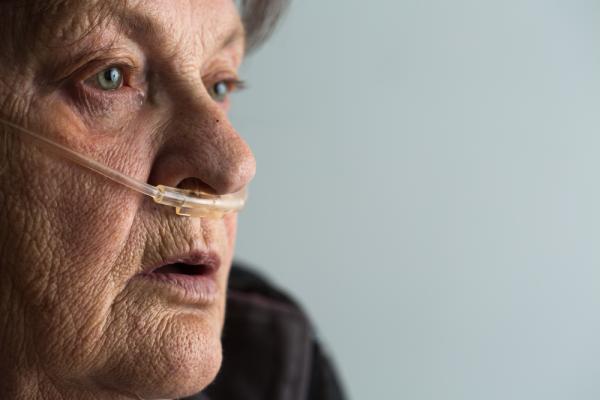By now, anyone even slightly versed in health issues understands that cigarette smoking can irretrievably damage the lungs — whether via lung cancer or other disease processes, such as Chronic Obstructive Pulmonary Disease (COPD). It's also true, however, that even people who have never smoked may develop these conditions, and it's not always clear who is at the greatest risk. A recent study indicates that never-smoking women are more likely to develop COPD than never-smoking men.
COPD includes emphysema and chronic bronchitis — both of which impair breathing, but by different mechanisms. Emphysema is a disease in which the tiny air sacs at the ends of the bronchial tree are damaged and collapse. This collapse means there are fewer, larger air sacs, thus decreasing the area in which oxygen can diffuse into the lungs from inhaled air. This process is irreversible. In chronic bronchitis, an inflammatory process, the walls of the airways thicken and become clogged with mucus, thus narrowing the access routes for inhaled air. As COPD progresses breathing becomes more difficult and labored; the sufferer may end up tethered to an oxygen tank in order to perform the daily tasks of life. Neither form of COPD is reversible, but the progress can be slowed by appropriate treatment (for more information see the COPD Foundation website ). It is thus important to understand the risk factors (other than smoking) which can lead to COPD.
Dr. Esme Fuller-Thomson and colleagues from the University of Toronto used data from the CDC's 2012 Behavioral Risk Factor Surveillance System to investigate the occurrence of COPD in adults over 50 years old. They analyzed the data to see whether various demographic factors might predict who was at increased risk of developing COPD even though they had never smoked. In all, they used data from nearly 130,000 non-Hispanic black and white, men and women.
They found that women had the highest prevalence of COPD — black women more than white, and both higher than men. Seven percent of black women had the condition, compared to 5.2 percent of white women, 2.9 percent of white men, and 2.4 percent of black men. The researchers found that when they controlled for socioeconomic status, women of both groups had significantly higher odds of developing COPD than did white men, while black men had significantly lower odds. They interpreted these data to indicate that racial differences in the development of COPD may be related to socioeconomic factors.
While this study corroborates earlier work in this area, we must acknowledge that as an observational type of study, causality can't be assumed. Additionally, the data was derived from telephone interviews with participants and might be subject to reporting errors.
Future information in this area will likely include genetic information, as studies of genes that confer susceptibility to or protection from COPD are ongoing.




